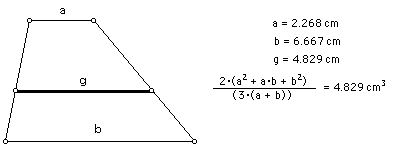

Given trapezoid KLMN, with KL // NM, KL = a, and NM = b.
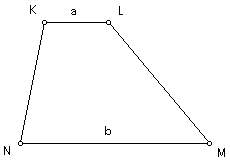
Construct lines KM, NM, and KN.
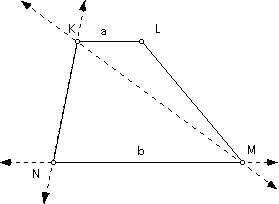
Construct a circle with center at point K and with radius = a. Construct the intersection of this circle and line KN and call it point R. Construct a circle with center at point R and with radius = b. Construct the intersection of this circle with line KN (so that R is between K and this point of intersection) and call it point S. Now, by construction, KS = a + b.
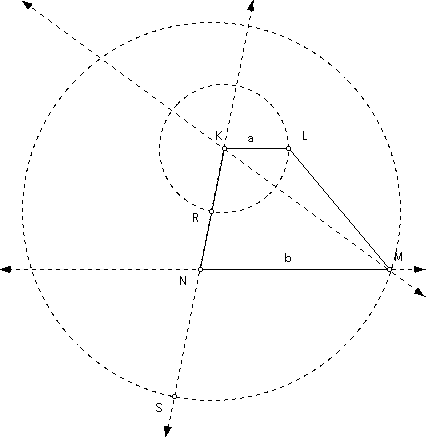
Construct a circle with center at point K and with radius = a. Construct the intersection of this circle and line KM and call it point T. Construct a circle with center at point S and with radius = a. Construct the intersection of this circle and line KN and call it point U. Construct segment ST. Construct a line parallel to segment ST through point U. Construct the intersection of this line and line KM and call it point V. By construction, triangles KST and KUV are similar. Therefore, KS/SU = KT/TV, and so (a + b)/ a = a/ TV. This means that TV = (a^2)/(a + b).
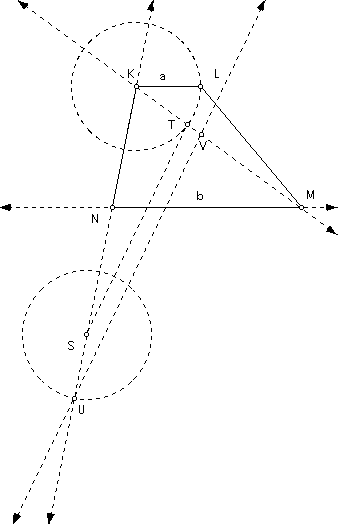
Construct a circle with center at point N and with radius = TV. Construct the intersection of this circle and line NM and call it point W. Therefore, NW = (a^2)/(a + b).

Construct a circle with center at point K and with radius = a. Construct the intersection of this circle and line KM and call it point T. Construct a circle with center at point S and with radius = b. Construct the intersection of this circle and line KN and call it point X. Construct segment ST. Construct a line parallel to segment ST through point X. Construct the intersection of this line and line KM and call it point Y. By construction, triangles KST and KXY are similar. Therefore, KS/SX = KT/TY, and so (a + b)/ b = a/ TY. This means that TY = ab/(a + b).
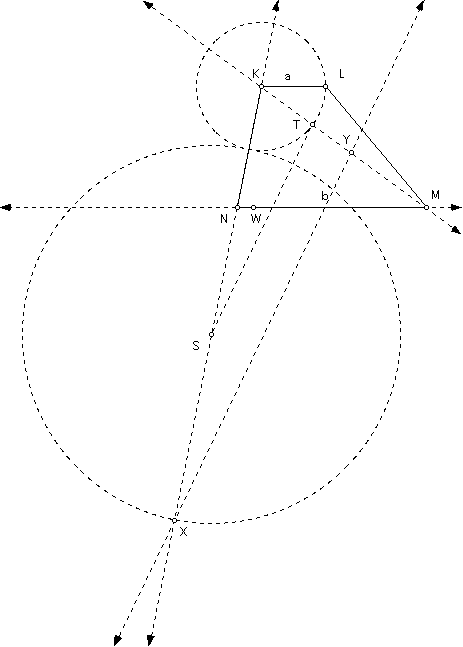
Construct a circle with center at point W and with radius = TY. Construct the intersection of this circle and line NM and call it point Z. Therefore, WZ = ab/(a + b). By segment addition, NZ = (a^2 + ab)/(a + b).
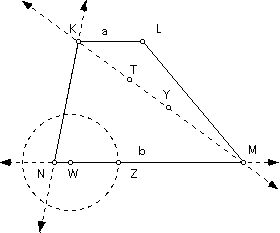
Construct a circle with center at point K and with radius = b. Construct the intersection of this circle and line KM and call it point A. Construct a circle with center at point S and with radius = b. Construct the intersection of this circle and line KN and call it point X. Construct segment SA. Construct a line parallel to segment SA through point X. Construct the intersection of this line and line KM and call it point B. By construction, triangles KSA and KXB are similar. Therefore, KS/SX = KA/AB, and so (a + b)/ b = b/ AB. This means that AB = (b^2)/(a + b).
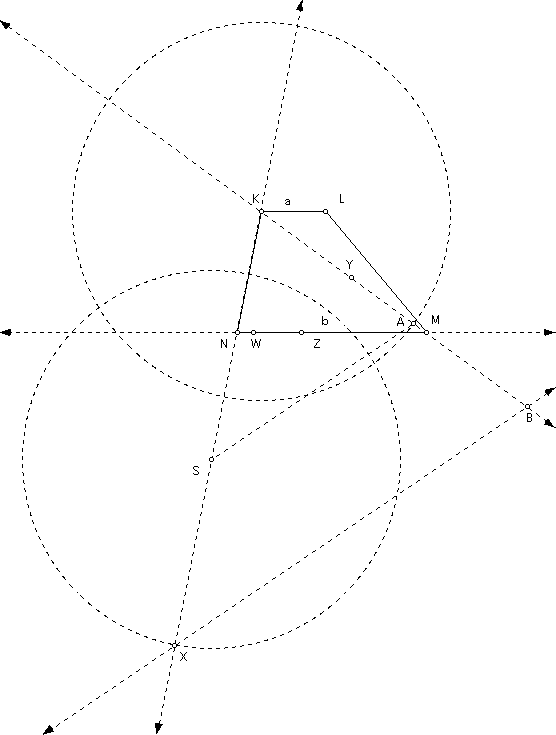
Construct a circle with center at point Z and with radius = AB. Construct the intersection of this circle and line NM and call it point C. Therefore, ZC = (b^2)/(a + b). By segment addition, NC = (a^2 + ab + b^2)/(a + b).

Construct segment NC. Construct a line perpendicular to segment NC at point N. Construct a circle with center at point N and passing through point W. Construct the intersection of this circle and the perpendicular line and call it point D. Construct a circle with center at point D and passing through point N. Construct the intersection of this circle and the perpendicular line and call it point E. Construct a circle with center at point E and passing through point D. Construct the intersection of this circle and the perpendicular line and call it point F. Since segments ND, DE, and EF are all radii of congruent circles, then ND = DE = EF = (1/ 3)NF.
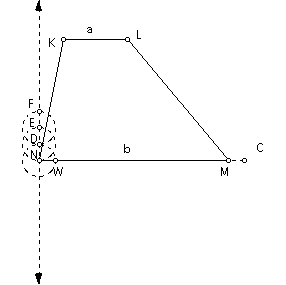
Construct segment FC. Construct a line parallel to segment FC through point E. Construct the intersection of this line and segment NC and call it point G. By construction, triangles ENG and FNC are similar. Therefore, since NE = (2/ 3)NF, it follows that NG = (2/ 3)NC = (2/ 3)*((a^2 + ab + b^2)/(a + b)).
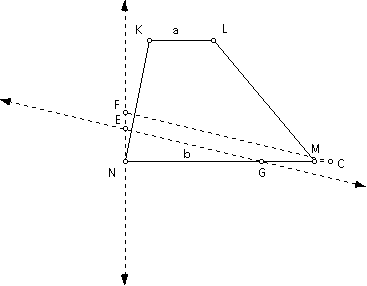
Construct a line parallel to leg KN through point G. Construct the intersection of this line and leg LM and call it point Q. Construct a line parallel to base NM through point Q. Construct the intersection of this line and leg KN and call it point P. By construction, quadrilateral PQGN is a parallelogram. Therefore, PQ = NG = (2/ 3)*((a^2 + ab + b^2)/(a + b)).
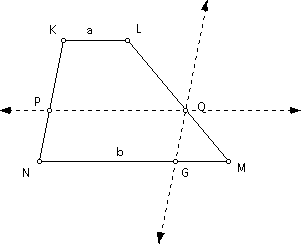
Construct segment PQ. The length of this segment is the centroidal mean, "g," of the bases KL and NM.
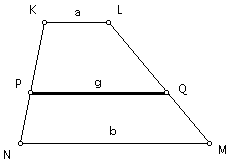
Double check the construction by taking measurements and using the equation for finding the centroidal mean.
